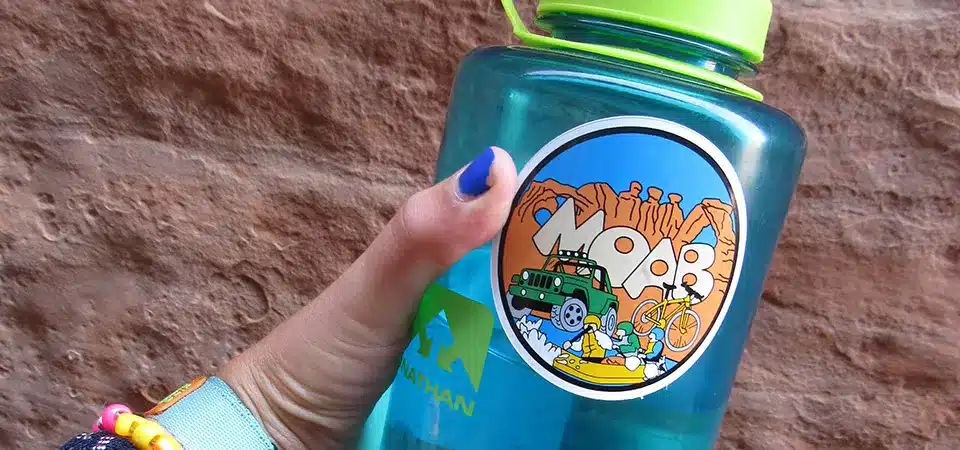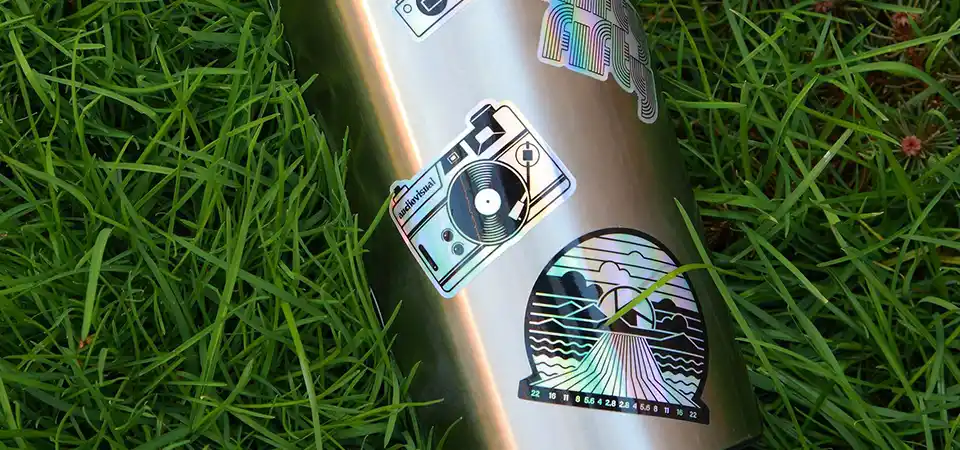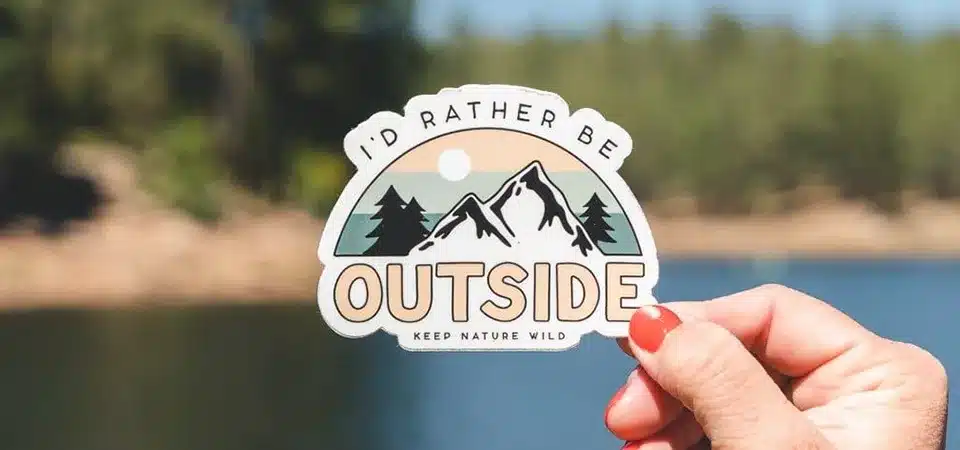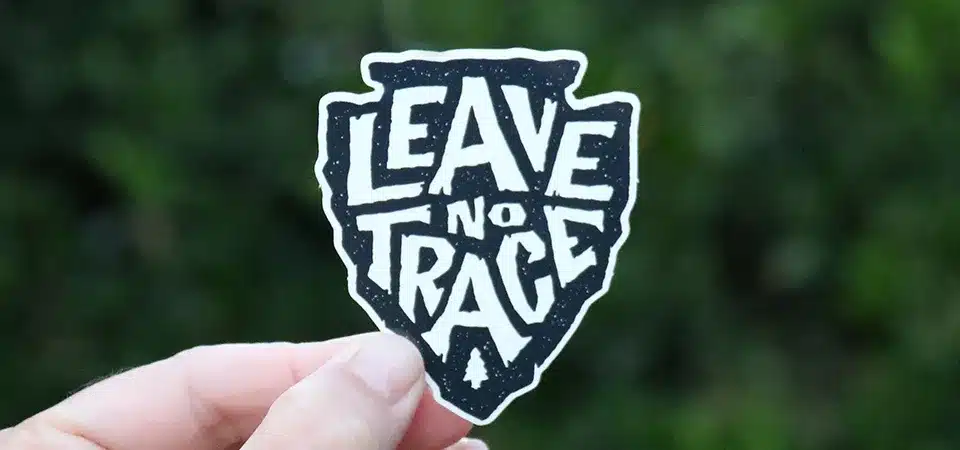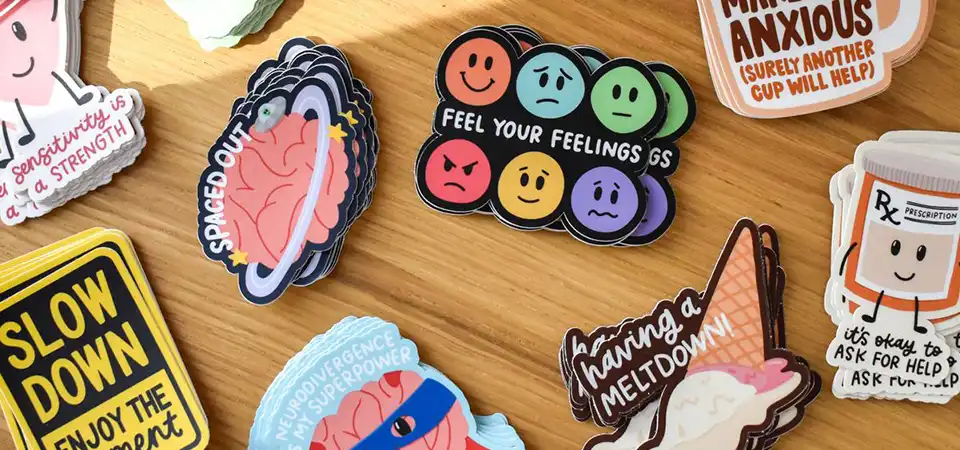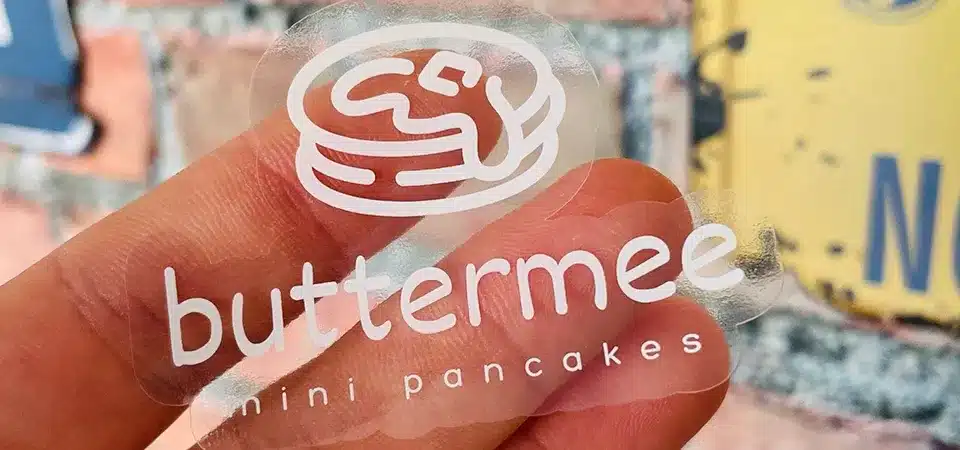You put a cool sticker on your water bottle, but it peels after one wash. It's frustrating to waste money on stickers that look great but can't handle daily life.
For long-lasting water bottle stickers, the best choice is a laminated premium vinyl or PET. Focus less on the material name and more on the entire construction: a waterproof base, permanent adhesive, durable ink, and a protective laminate shield.
As someone who prints stickers every day, I can tell you the secret isn't just picking "vinyl." A truly durable sticker is a system where the material, ink, adhesive, and laminate all work together. A cheap vinyl sticker with the wrong ink will fail just as fast as a paper one. If you want a sticker that survives daily washing, condensation, and being thrown in a bag, you have to look at the whole package. Let's break down what really matters.
What are the best stickers to put on water bottles?
You want to personalize your bottle but worry the stickers will get ruined. It feels like a waste of money to buy stickers that peel, fade, or turn into a gooey mess.
The best stickers for water bottles are weatherproof vinyl or PET stickers. They are made with a plastic base, printed with waterproof ink, and sealed with a protective laminate to shield them against water, scratches, and sunlight.
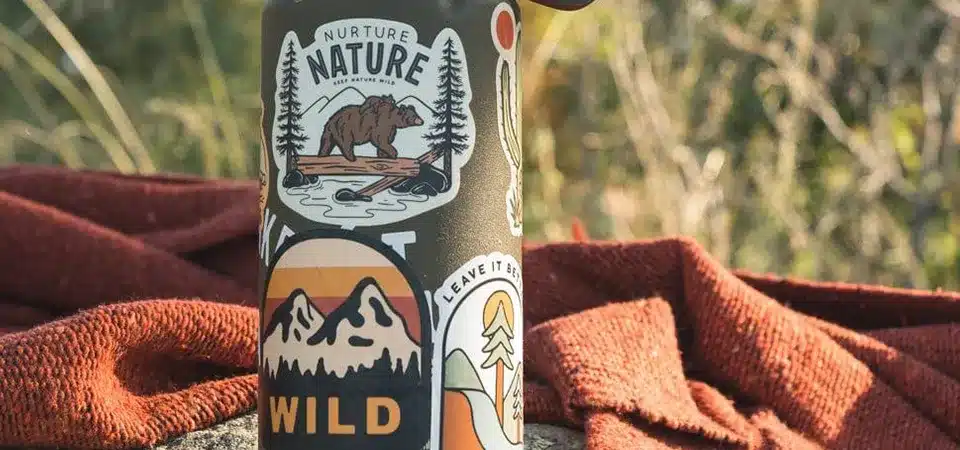
In my shop, I always tell clients to think of a durable sticker as a three-layer system. If any one of those layers is weak, the entire sticker will fail. You can't just have a vinyl base; you need the full combination to get a sticker that will actually last.
The Sticker Durability System
-
The Base Material (The Foundation): This must be a plastic film that doesn't absorb water. We use vinyl because it’s flexible and tough. A paper base, no matter how glossy, will always act like a sponge when water hits its raw edge.
-
The Ink System (The Color): The design has to be printed with inks that won't run. We use UV-cured or eco-solvent inks that chemically bond to the vinyl. Standard desktop printer ink is water-based and will smear instantly.
-
The Laminate (The Shield): This is the clear protective layer we add on top. It’s the sticker’s armor. It seals the ink from moisture and provides the primary defense against scratches from handling and UV rays from the sun, which cause fading. A sticker without laminate is a sticker without protection.
What’s the difference between vinyl, BOPP, and PET for water bottle stickers?
You see terms like vinyl, BOPP, and PET online and get confused. Choosing the wrong one means your sticker might peel off, shrink in the heat, or just not last.
Vinyl is the flexible all-around champion for durability. PET offers superior heat resistance, making it the top choice for dishwashers. BOPP is a great, affordable option for product labels but is less common for premium bottle stickers.
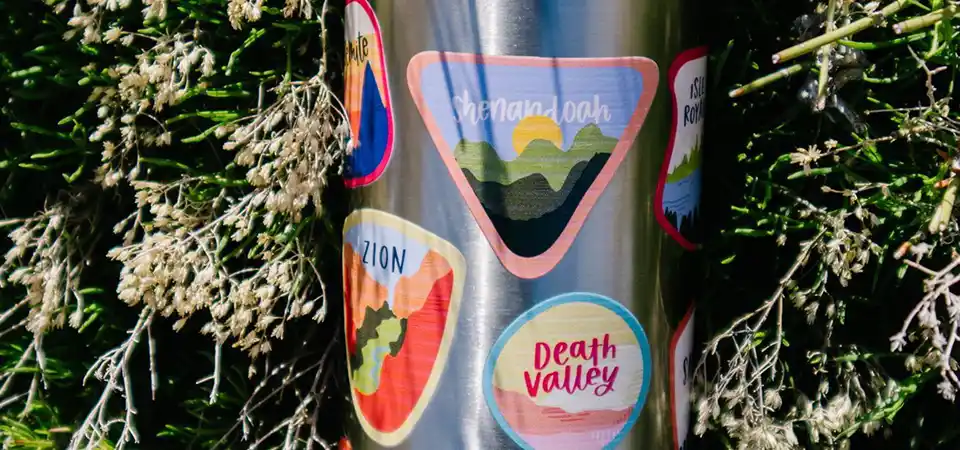
These are all types of plastic, so they are all waterproof materials. But they have different strengths that make them suitable for different jobs. I help my clients choose based on how they'll use the sticker. For a water bottle, it usually comes down to vinyl vs. PET.
Material Breakdown
| Material | Key Feature | Best For | Weakness |
|---|---|---|---|
| Vinyl (PVC) | Flexible & Durable | General use, curved surfaces like helmets | Standard vinyl can shrink in very high heat |
| PET (Polyester) | Heat & Tear Resistant | Dishwasher use, clear stickers | Less flexible than vinyl |
| BOPP (Polypropylene) | Oil & Chemical Resistant | Product labels (cosmetics, food jars) | Thinner, less premium feel than vinyl |
For most people, premium laminated vinyl is the perfect choice for a water bottle sticker. It's tough, looks great, and conforms well to the bottle's shape. But if you tell me you absolutely must run your bottle through the dishwasher every day, I'd steer you toward PET because it handles the high heat of the drying cycle much better. No matter which you choose, the sticker must be laminated to survive.
Are matte or glossy stickers better for water bottles?
You love both sleek matte and shiny glossy finishes but don't know which one holds up better. You worry that one might scratch more easily or look worse after a few washes.
Functionally, both matte and glossy laminates offer the same excellent protection. The difference is purely cosmetic. Glossy makes colors pop with a high-shine finish, while matte offers a modern, non-glare look. Neither is more "durable" than the other.
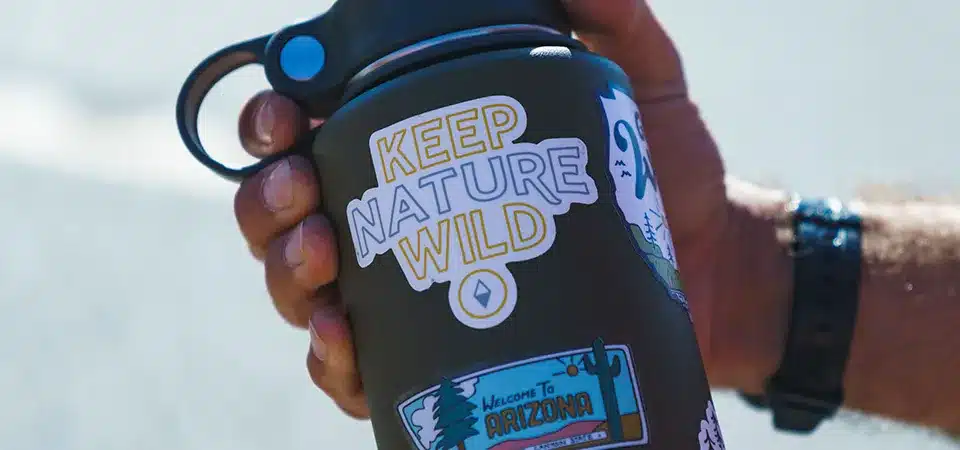
This is one of the most common questions I get, and the answer is simple: pick the one you think looks better! The protection comes from the laminate material itself, not its texture. Both options are a thin layer of plastic that shields the ink underneath from scratches, water, and sun.
A Matter of Style
-
Glossy Laminate: This is the classic, high-shine finish. It makes colors look incredibly vibrant and saturated. The downside is that it can show fingerprints and glare in direct light. It's great for eye-catching designs that need to pop.
-
Matte Laminate: This finish has a soft, satin-like feel with zero glare. It gives stickers a more modern and subtle look. While it resists fingerprints better than glossy, it can sometimes show scratches or scuffs a bit more if they are deep.
I personally have both on my water bottle. The glossy ones look a bit brighter, and the matte ones feel a bit smoother. After over a year of use and countless hand washes, they both still look perfect. The choice is 100% about your personal aesthetic.
Are vinyl stickers really waterproof or just water-resistant?
You see "vinyl sticker" and assume it can survive a monsoon. Then it fails after one trip through the dishwasher, leaving you confused and disappointed with your purchase.
The vinyl material itself is fully waterproof. However, a "vinyl sticker" is only truly waterproof if it is also printed with waterproof ink and sealed with a laminate. Without those other two elements, the sticker will fail.
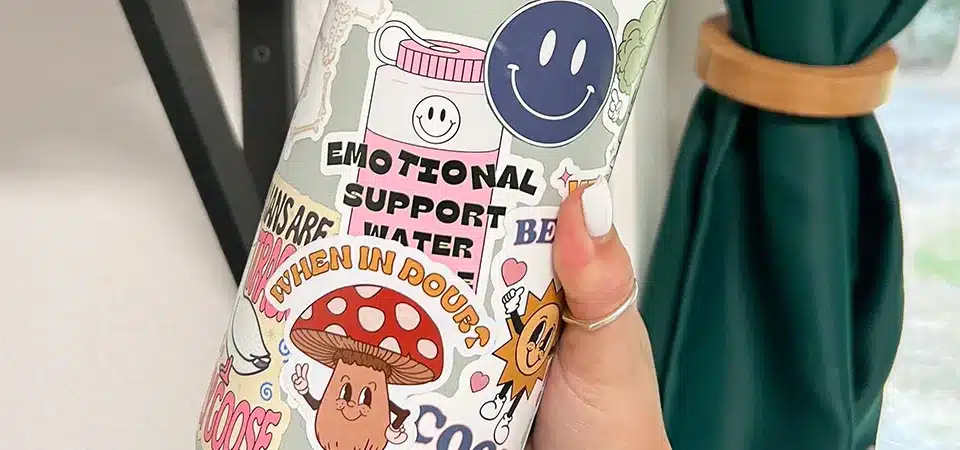
This is a great question because it gets to the heart of what makes a sticker durable. The terms can be misleading. Think of it like a rain jacket. The fabric of the jacket might be waterproof nylon, but if the seams aren't sealed and the zipper isn't covered, water is still going to get in and you're going to get wet.
A vinyl sticker is the same way.
- The "Fabric" (Vinyl): The base vinyl material is non-porous plastic. Water can't soak into it. This part is waterproof.
- The "Seams" (Ink): If the design is printed with cheap, water-based ink, it's like having unsealed seams on your jacket. The ink will run and bleed when it gets wet, ruining the sticker.
- The "Zipper" (Finish): The laminate is the final seal. It covers the ink and the vinyl, creating a completely unified, waterproof object.
So, when you buy a "vinyl sticker," you have to make sure it has the whole system. A sticker made of just vinyl and cheap ink is, at best, water-resistant. A laminated sticker made with waterproof ink is truly waterproof.
Can water bottle stickers survive dishwashers?
You love the convenience of your dishwasher but are terrified it will obliterate the sticker collection on your favorite water bottle. This forces you to hand-wash it every time.
Most standard waterproof stickers will fail in a dishwasher over time. To be dishwasher-safe, a sticker needs to be specifically designed for it, using a PET or heavy-duty vinyl base, a high-temperature adhesive, and a durable laminate.

A dishwasher is a sticker torture chamber. I've done a lot of tests in my own dishwasher at home for clients who need this level of durability. A sticker has to survive a three-pronged attack that a simple hand wash doesn't have.
The Dishwasher Gauntlet
- The Attack of High Heat: The drying cycle can reach temperatures that soften and melt standard sticker adhesives. This causes the sticker's edges to curl and eventually peel off completely.
- The Attack of Harsh Detergents: Dishwasher soap is a powerful chemical designed to break down grease and food. Over many cycles, these same chemicals can degrade the ink and adhesive on a sticker.
- The Attack of Water Jets: The high-pressure spray is designed to blast off grime. If there is even a tiny, microscopic lift in a sticker's edge, that jet will force its way underneath and work it loose.
For true dishwasher safety, I recommend PET-based stickers. The polyester material has a higher heat tolerance than vinyl, and when paired with a super-strong adhesive and laminate, it has the best chance of survival.
Do water bottle stickers need laminate to last longer?
You find a cheaper, unlaminated sticker and wonder if you can save some money. But taking this shortcut often leads to faded, scratched designs that need to be replaced in a few months.
Yes, absolutely. Lamination is the single most important factor for a long-lasting water bottle sticker. It provides a crucial, non-negotiable shield against scratches, moisture, and the UV rays that cause colors to fade. Unlaminated stickers will always fail faster.
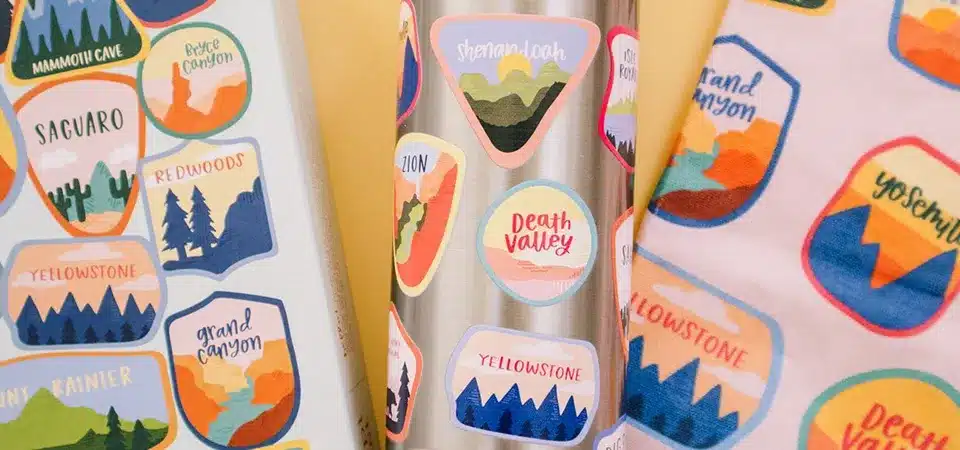
I tell every single one of my clients this: if you want your sticker to last, get it laminated. It's not an upsell; it's the key to durability. Thinking you can save money by skipping the laminate is like thinking you can save money on a car by not getting a clear coat. The color will be gone in no time.
The laminate layer is the armor that takes all the abuse of daily life so the printed design underneath doesn't have to. On a water bottle, it performs three essential jobs:
- Scratch Resistance: It protects the ink from getting scuffed when you toss your bottle in a bag or it rubs against other items.
- Chemical & Water Sealing: It creates an impenetrable barrier so that water, soap, or oils from your hands can't damage the printed ink.
- UV Protection: When you take your bottle outside, the laminate absorbs harmful UV rays from the sun, preventing the vibrant colors from fading into dull, pale shades.
An unlaminated sticker is basically an exposed ink drawing on a piece of plastic. It won't last.
Which sticker material lasts the longest on reusable bottles?
You want to buy one set of awesome stickers and have them last for years. Choosing the wrong material or applying it incorrectly means you'll be peeling off residue and starting over.
Laminated premium vinyl or laminated PET lasts the longest. They must be applied to a clean, smooth, non-textured surface and left to cure for 24 hours. Proper application is just as important as the material itself.
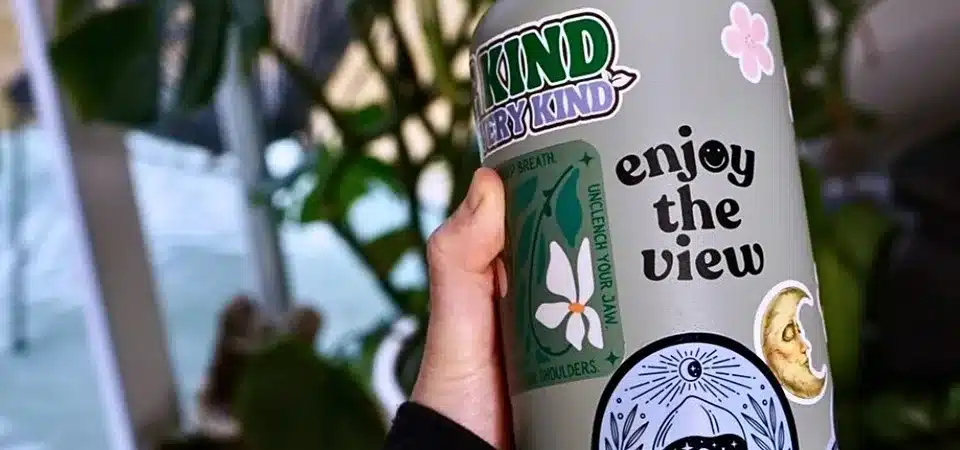
The longest-lasting sticker isn't just a product; it's the result of a process. It's about combining the right materials with the right application technique. As a sticker expert, I can tell you that a perfect sticker applied to a dirty surface will fail 100% of the time.
Here is the professional formula for a sticker that lasts for years:
- The Right Material: Start with a premium sticker made from a laminated vinyl or PET base. This ensures the construction is waterproof, scratch-proof, and UV-resistant from the start.
- The Right Surface: The sticker needs to be applied to a completely smooth surface. It will not stick well long-term to textured, powder-coated, or porous surfaces. The adhesive needs maximum surface area to bond.
- The Right Application: First, clean the surface with rubbing alcohol to remove any oils. Let it dry. Then, apply the sticker, pressing firmly from the center outwards to push out all air bubbles.
- The Right Cure Time: Let the sticker sit for at least 24 hours before washing it or putting it through heavy use. This allows the adhesive to fully bond with the surface, creating a permanent seal.
Conclusion
For durable water bottle stickers, choose laminated vinyl or PET. The entire system—material, ink, and laminate—combined with proper application on a clean surface is the key to making them last.

